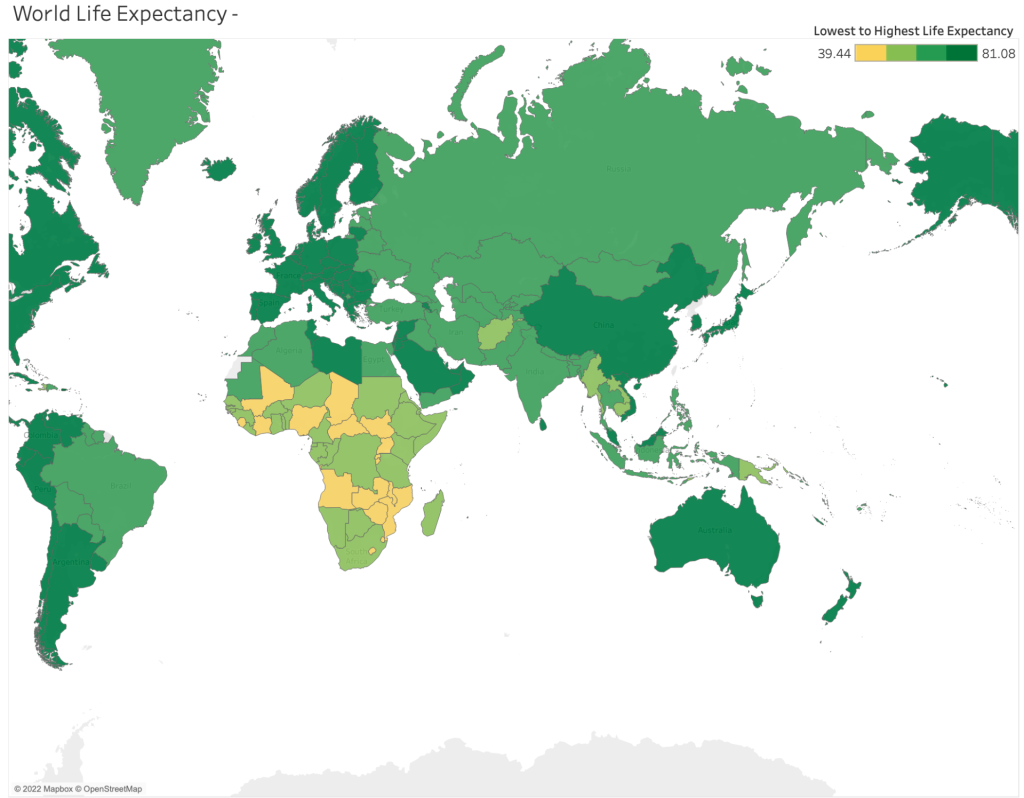
Government Health Expenditure on Life Expectancy
The most important statistic for measuring population health is life expectancy. Life expectancy captures mortality across the whole life course, making it more comprehensive than the restricted measure of newborn and child mortality, which concentrates only on mortality at a young age. It provides information on the typical death age for a population.
Since the Age of Enlightenment, life expectancy has rapidly grown. Life expectancy began to rise in the early industrialized nations in the 19th century, but it remained low in the rest of the world. As a result, there was a huge disparity in the distribution of health throughout the world. Good health in the wealthy nations and continuously poor health in the developing nations. This worldwide inequality has declined during the last few decades. The nations with the highest life expectancy in 1800 are the only ones in the world with a lower life expectancy today. Many nations that were formerly afflicted by poor health are quickly catching up.
The world map below shows the life expectancy of the year 2000.

African nations have been struggling with health related issues for quite some time. One of them is that, when compared to other continents, such as Europe Africa has the nations with the lowest life expectancies. Why is that? Does government health expenditure play a big role disaster?
Government health expenditure plays an important role in guaranteeing people’s livelihood and in improving the quality of human capital, and it also plays an important role in affecting economic development.
In order to characterize the specific trend of government health spending affecting life expectancy in Africa, the dashboard below chart shows the expenditure in healthy sectors by the government, from years 2000 to 2018, of the top 3 countries (in terms of life expectancy) and the bottom 3 in comparison as shown in the map.
We clearly see that countries with high government expenditure have a higher life expectancy.
Even though African nations still have a low life expectancy in comparison to other countries, significant improvement has been made since the early 2000s as life expectancy within African nations has seen an increase of at least 10 years.This shows a positive relationship between government health expenditure and life expectancy.
What we can do to further help and develop Africa is to create a funded project by the UN or the WHO to help create more hospitals in the region that would be specialized in treating and aiding people with diseases.